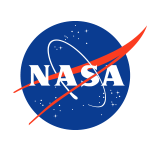Autonomous Multi-Robot Exploration using UWB
Project Description
Single multi-sensor teleoperated systems are not optimal for NASA exploratory missions because they limit the coverage area and scope of exploration and create a single point for mission failure. A better solution would use many robots cooperating to maximize exploration area and location accuracy while minimizing total system power and weight. The goal of this research is to investigate pulsed-RF Ultra Wideband (UWB) technology for its ability to simultaneously provide enhanced ad hoc wireless communication, distributed precision navigation/localization, and radar sensing. The ultimate goal is development of a subsumed navigation layer providing a straightforward mechanism for distributed autonomous guidance algorithms to quickly detect, share, and adapt to changes in the environment using novel distributed navigation controls. Pulsed-RF UWB supports simultaneous communications, peer-to-peer precision ranging, and multi-static radar. Using this single basis technology will enable more and smaller exploratory agents. Using UWB would solve communication and localization issues, while providing the added benefit of radar sensing and imaging. Larger spatial areas would be more accurately explored with lower power/weight/volume and with much greater system redundancy.
More »Anticipated Benefits
UWB distributed navigation and sensing technology would enhance NASA's mission in a number of ways. First, multi-robotic systems with an instrument-laden "Parent/Base" vehicle could support localization and data storage/uplink of many lightly laden "Child/Scout" vehicles. These scout vehicles would use UWB for ranging, communications, and cooperative radar, providing a small, redundant exploration architecture. Second, this concept can be extended to multiple aerial vehicles flying in tight formation using UWB peer-to-peer ranging. Simultaneous UWB multi-static radar in the outer agents would scan the surface, providing precision altimetry as well as imaging. UWB uniquely could provide precision (~100ps) dynamic time synchronization supporting distributed aperture radio arrays for long-distance transception through this swarm of cooperative agents.
Development of a mobile ad hoc network with subsumed navigation layer and enabling dynamic multi-static radar for multi-robotic systems will support many non-NASA applications including: - Multi-robotic search and rescue systems working together to map and sense people in rubble - Cooperative security robots, continually mapping floor plans looking for out of place items - Autonomous chem/bio/rad hazards: small teams of robots with special sensors quickly measure and map the location of hot spots within storage warehouses - Distributed personnel and high-end asset tracking in GPS-denied industrial factories, warehouses, and construction sites - Vehicle collision avoidance safety systems for construction, mining, forestry, and other heavy industries - Formation control in autonomous agriculture
Primary U.S. Work Locations and Key Partners
| Organizations Performing Work | Role | Type | Location |
|---|---|---|---|
| TDC Acquisition Holdings, Inc. | Lead Organization |
Industry
Small Disadvantaged Business (SDB)
|
Huntsville, Alabama |
 Langley Research Center
(LaRC)
Langley Research Center
(LaRC)
|
Supporting Organization | NASA Center | Hampton, Virginia |
| University of Alabama, Huntsville | Supporting Organization | Academia | Huntsville, Alabama |
Primary U.S. Work Locations
-
Alabama
-
Virginia


